Influencer Marketing Platforms
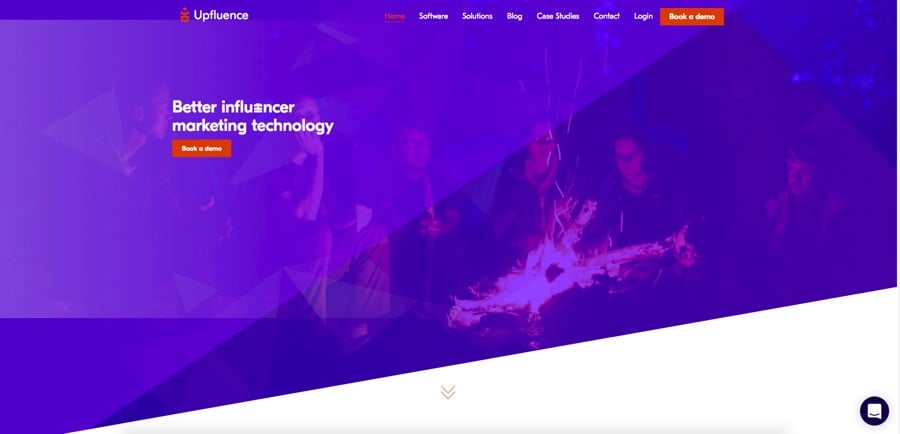
Upfluence is a self-serve platform, allowing it set it pricing at a level affordable by small and medium-sized businesses, although companies like Microsoft and PayPal also utilize its services.
It has recently grown out of two products - Facade, a social media search engine, and Publishr, an influencer relationship management system.
It uses a massive database with 500 million items of content, spread across Facebook, Twitter, Instagram, YouTube, Pinterest, and blogs. Businesses can search through the database to find influencers that match their specific criteria. There is a considerable amount of information in the database on each influencer. Businesses can drill their way down through the data to find influencers who are most suitable for their needs.
The influencer management system provides tools for brands to manage each influencer relationship. For example, they can create lists of suitable influencers for particular campaigns. They can track the performance of their influencer campaigns, and collaborate on content.

Services Offered: Influencer DiscoveryCampaign Management
Channels: Facebook, Twitter, Instagram, Youtube, Pinterest, Blogs
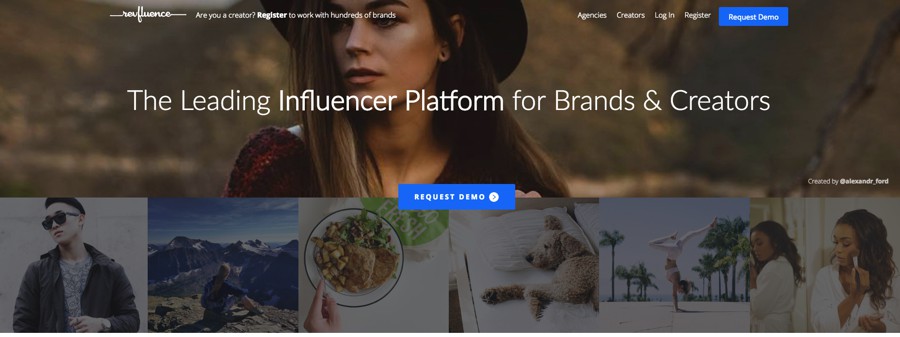
Revfluence is a self-service platform, working with Instagram and YouTube, with a database of more than 150,000 influencers who have opted into the system. Although anybody can sign up to Revfluence, creators have to meet criteria to be able to view brands or campaigns. Currently, thimediaks means that you need to have 500 Instagram likes or 2,500 YouTube views to be considered an influencer.
Any influencer that meets the criteria (and passes a manual review to ensure posted content is suitable) gets entered into Revfluence’s searchable database and is, in turn, able to see any proposals from brands. It has a simple search engine, including the Tinder-like “Quickmatch” which does its best to match up brands and influencers for a particular campaign.
Revfluence provides an extremely thorough range of campaign tools to assist with every aspect of campaign management.

Services Offered: Influencer DiscoveryRelationship ManagementCampaign ManagementInfluencer Marketplace
Channels: Instagram, YouTube, Blogs
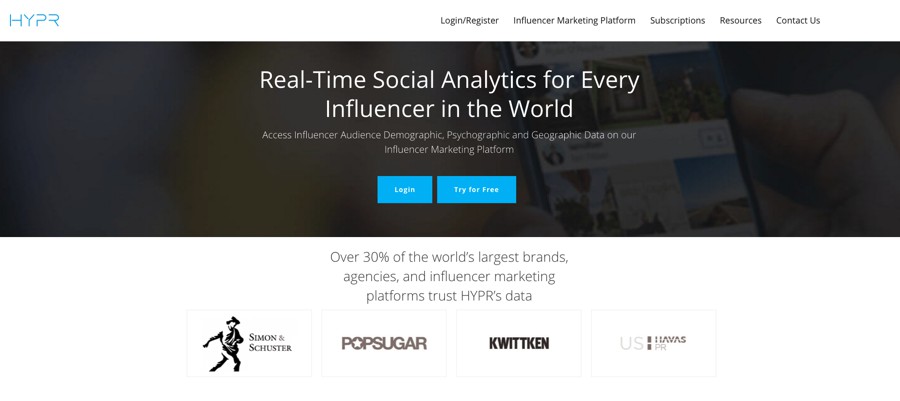
Hypr is predominantly an influencer platform designed for brands to discover influencers, based on their postings on Facebook, Twitter, Instagram, YouTube, and Pinterest.
They have a gigantic database of 10 million influencers, along with extensive demographic data about each influencer's following. Obviously, this is not an opt-in network. They have a giant search engine scraping social media posts, determining popularity, and collecting data.
Hypr considers itself a “talent agnostic” search engine, as it relies on data, not opinion, to determine who is an influencer.
Obviously, Hypr’s main strength is the power of its search engine, which allows for very comprehensive and targeted searches for particular types of influencers (although the capabilities are severely restricted for those who choose the Standard plan).
The only real management tool is the ability to create lists of different groupings of influencers.

Services Offered: Influencer Discovery
Channels: Facebook, Twitter, Instagram, Youtube, Pinterest
-
BrandBacker
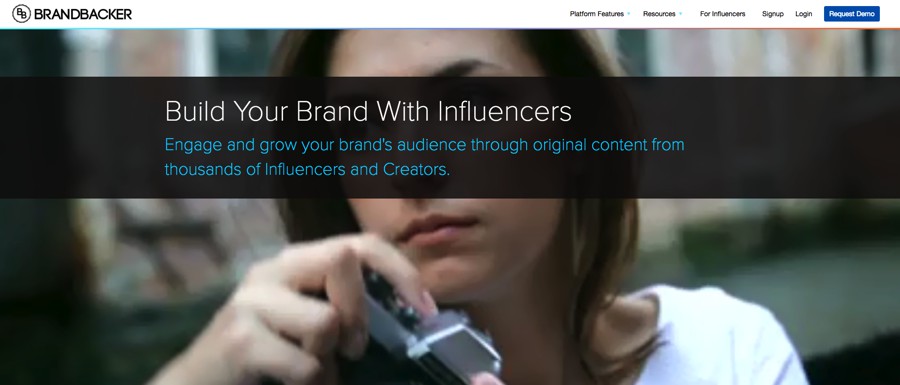
BrandBacker is another influencer marketing platform that encourages talented social media users to join up as an influencer. It particularly focuses on niches such as beauty, women’s fashion, mommy, menswear, lifestyle, food, and travel. There are currently 20,000 influencers signed up.
Influencers receive opportunities in their dashboard for such things as free samples, paid posts, discounts and early access to things. They are also given the opportunity to apply to campaigns that interest them. Once a brand agrees to use an influencer, that person creates content and submits it for brand approval. Once approved it is up to the influencers to publish the content and share it with their audience.
Brandbacker provides a great deal of data for brands. Brands can learn who is talking about their brand, and compare their content performance with their competitors. Brandbacker also shows industry trends and in-depth detail about topic trends.
-
Content BLVD

Content BLVD’s focus is on enabling brands to see their products shared on YouTube, so it seeks to match up product companies with YouTube creators. Their aim is to make it easy for brands to match up with popular YouTube creators who match the brand’s niche.
YouTube creators have the opportunity to set up an editorial calendar of their upcoming videos, giving brands a chance to see any possible synergies between the video channel and their brand.
Brands list products they want to promote in Content BLVD’s marketplace. Interested YouTubers check the listed products and can request a sample so they can promote it. Brands look at requests and choose to accept or decline each one, based on the quality and relevance of each YouTuber. The brands can see the videos go live, track any physical product shipments, message YouTubers, and examine video performance from their dashboard.
One difference with Content BLVD is that it features unpaid placements. YouTubers choose to feature products because they interest them and make good video content.
-
Exposely
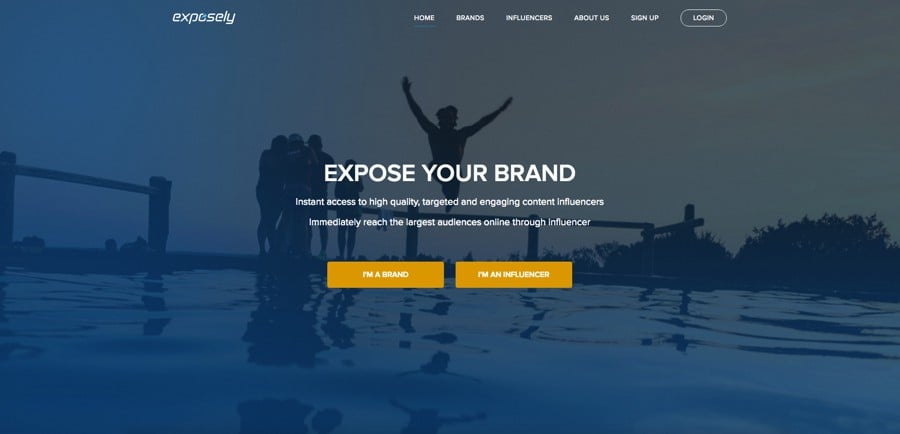
Exposely is a self-service social advertising platform, connecting brands with highly engaged online influencers. Those who believe they are influencers can sign up to the site to gain access to paid opportunities to share content from brands. They can be social influencers, web influencers or video influencers.
Brands sign up, set a budget, search out relevant influencers, pick who they want to work with and then carry out campaigns. Even small businesses can work on Exposley, with campaign payments starting at $100.
Both parties have access to clear dashboards detailing engagement and campaign data.
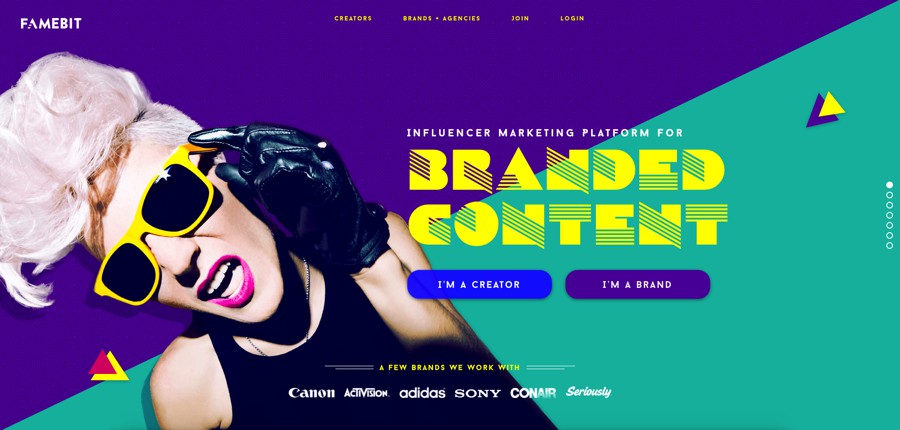
FameBit began with a focus on video content, initially connecting popular YouTubers with brands. Brands provided content on the platform for popular influencers to post on YouTube, or alternatively, they allowed creators to come to them with proposals. Over time they expanded to also cover Facebook, Tumblr, and Twitter. For a while, they also worked with Instagram influencers, although they no longer do so.
Google bought the company in October 2016, at which time FameBit claimed to have over 300 million subscribers.
Both brands and creators can sign up to FameBit. To be considered an influencer, however, creators need 5,000 followers on a social account for their membership to be accepted.
Unlike many other platforms, FameBit focuses on creators/influencers finding brands, rather than the other way around. Brands post a campaign they want to run, and creators make proposals to them of what they could do. FameBit makes its money by charging a 10% fee on any transactions between the brands and the creators.

Services Offered: Influencer Marketplace
Channels: Facebook, Tumblr, Twitter, YouTube
-
Find Your Influence

Find Your Influence claims to be the leading influencer marketing technology platform, connecting more than 100,000 influencers to more than 500 brands and marketers, in 10,000 campaigns to date. They operate with influencers across blogs, Facebook, Instagram, Twitter, YouTube, Vine, and Pinterest.
They have some big-name clients, including Lenovo, Kleenex, Sony, Hallmark, Walmart, Honda, and Budweiser. However, Find Your Influence does have a variety of pricing options, giving a wide spectrum of businesses access to their SaaS platform, ranging from $300 for small businesses running a single campaign who have access to 5,000 influencers to $1,500 for enterprises who can operate unlimited campaigns and can access the full 100,000 influencers should they choose.
They have a strong focus on their technology and have automated every step of the influencer marketing process. There are extensive real-time analytics and data-based reports made available to the brands to gauge the success of their campaigns.
-
Grapevine Logic
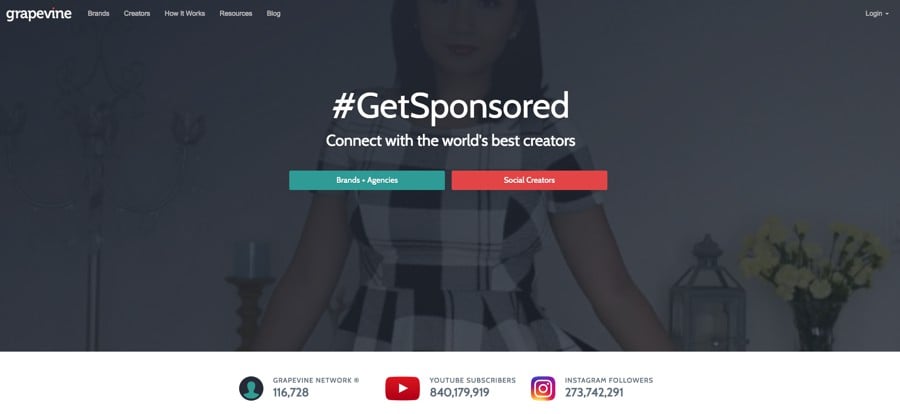
The Grapevine platform very much focuses on matching influential YouTube creators with brands wanting promotion on that platform. It is an opt-in platform for those with successful YouTube channels (although they can also link up their Instagram accounts). Anybody with a YouTube channel can join the Grapevine community, accessing their Creator Match tool to find and collaborate with other content creators. You do need either 10,000 YouTube subscribers or 5,000 Instagram followers to have access to the Grapevine Marketplace, however, where brands offer sponsorship opportunities.
Grapevine provides detailed data about each relevant influencer to brands wanting to set up campaigns. They have a Recommendation Engine which suggests appropriate influencers for brands to consider. Its results are refined and improved as brands operate campaigns, and it becomes clearer which types of influencer perform best for the brand.
-
Blogmint

Blogmint is Asia’s largest influencer marketing platform, proving that influencer marketing has a truly global impact. It currently has more than 40,000 influencers, vloggers, and micro-influencers on its books and works with 358 brands.
It uses a self-selection method where those who think of themselves as influencers sign up on the site. If you have a blog the system automatically creates what they call a BlogScore for it - a quality rating of between 0 and 100. You will gain a higher BlogScore if your blog performs well, with good traffic and engagement, and you have an active social influence. It appears to work in a similar way to an individual’s Klout score (although it does give more weight to blog performance).
Brands create campaigns they want and post them on Blogmint. Influencers can apply to be part of campaigns, and brands can invite particular influencers who they want to use - based on a number of factors, such as the genre or BlogScore. Once the brands have chosen their influencers they can run the campaign, on the influencer's blog or vlog, and the influencers promote it in their social media.
-
InkyBee
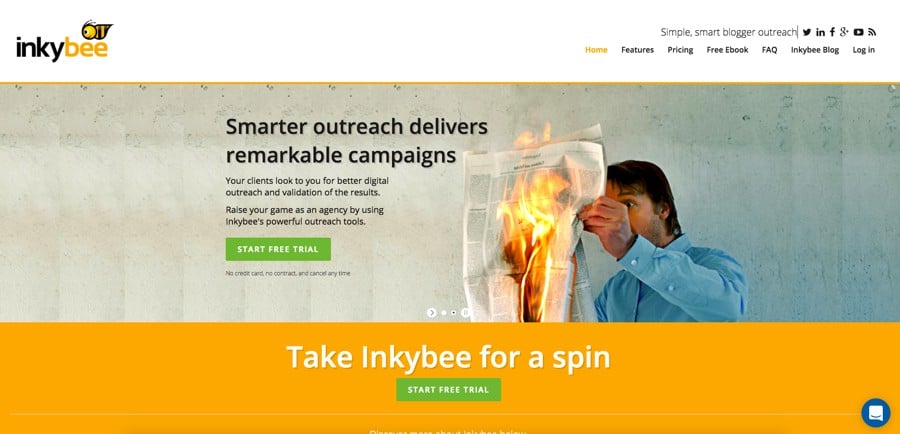
InkyBee targets itself at professionals in digital marketing, social media marketing, public relations and SEO. It provides a suite of web-based tools to help these marketing professionals to manage their entire digital outreach process - from finding influencers to measuring the success of their outreach campaigns.
They claim to cover a database of more than a million blogs. They use their algorithms to analyze this multitude of Big Data to come up with a huge quantity of statistical data, indicating who the most influential bloggers are for each niche. Marketers can sort and filter this data in multiple ways to help them determine which influencers are the best fit for their needs. InkyBee also has tools to enable Twitter bio searches and Twitter influencer analysis.
InkyBee offers more than just search tools, however. They also offer marketers a suite of outreach tools to help them engage with and reach out to their chosen influencers.
-
InNetwork
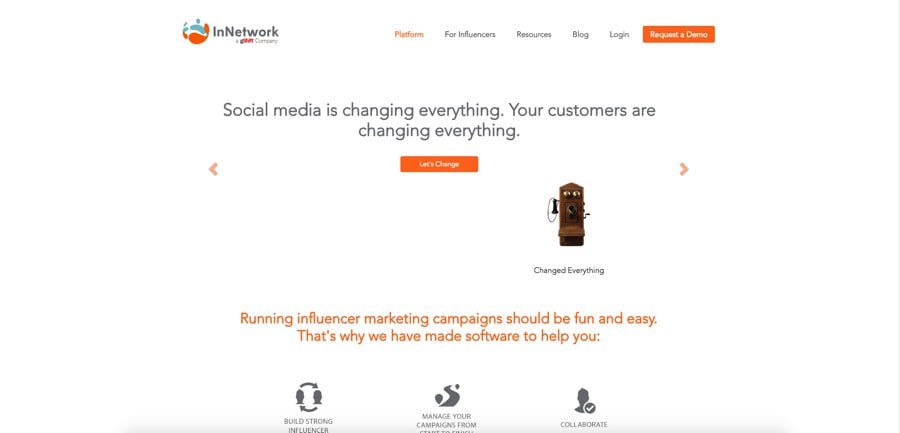
InNetwork is an opt-in influencer marketing platform. They are careful about who they permit to join their site as an influencer. You can’t just sign up, you have to go through a screening process first. They are not so concerned about somebody’s follower count (which is very much affected by the niche that somebody operates in) as they are by whether that following is loyal and engaged. They have a team of influencer analysts who vet each influencer for quality, credibility, authenticity, and engagement.
Currently, InNetwork provides analytics for blogs and Twitter, however, they also take into account Facebook, Instagram, YouTube, Pinterest, LinkedIn, Tumblr, Vine, Snapchat, and Flickr when calculating an influencer’s InNetwork score.
Marketers and brands search the InNetwork vetted network to find influencers that match their passions, styles and content types. InNetwork provides tools to help with the influencer campaigns, such as a project calendar, along with some influencer analytics and reporting tools.
-
InstaBrand
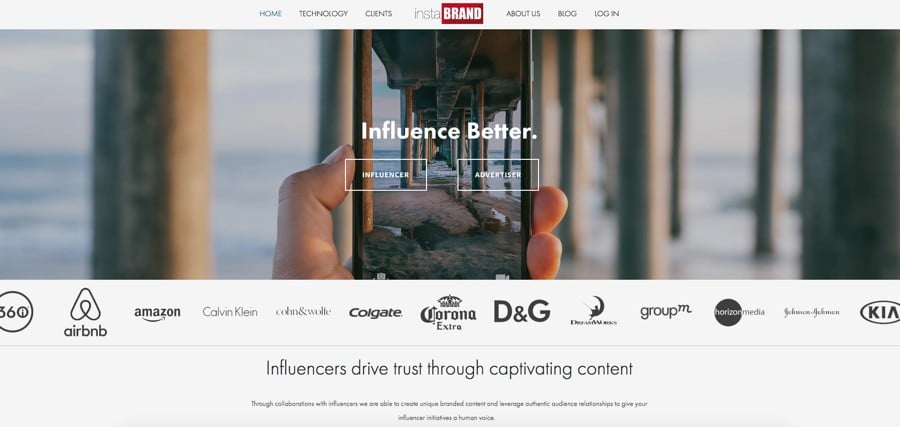
InstaBrand’s mission is to give brands a human voice, and content is how they do it. They have built up a database of 100,000 influencers on Snapchat, Instagram, Twitter, Facebook, and YouTube. They describe themselves as being a “Mobile First Company” and place their main focus on mobile-specific networks like Instagram and Snapchat.
The heart of InstaBrand is it’s Influencer Search Engine. Along with the 100,000 influencers it recognizes 3,000,000 unique mentions and 5,000,000 keywords. It uses keywords for search rather than predetermined verticals. It offers multiple search options for brands trying to locate the perfect influencers.
InstaBrand is more than just a search engine though. They help brands to create a strategy, match influencers, engage influencers, confirm activations and report.
-
IZEA
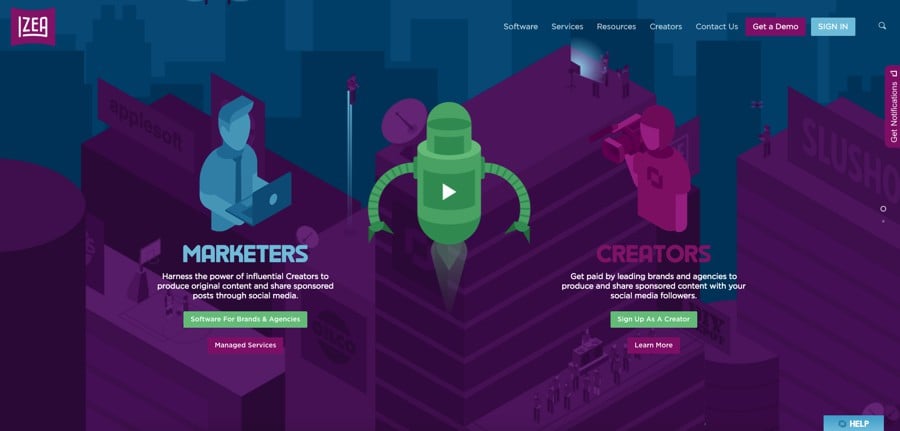
IZEA operates as a SaaS platform for agencies and brands, automating influencer and content marketing programs. IZEA began paying bloggers to produce sponsored content for brands in 2006 - almost the stone age of influencer marketing.
They now offer a single platform that covers all aspects of content production and distribution by influencers on their blogs, and through their social media accounts on Twitter, Facebook. Instagram and YouTube.
IZEA offers marketers an extensive platform search, allowing them to create lists of creators (IZEA’s term for influencers) who could meet their needs. The IZEA software gives each creator a score, depending on their social reach.
They have split their influencer marketing process into nine steps, all of which happen at some point on the IZEA platform:
- Create opportunity
- Target influencers
- Bid on opportunities
- Accept bids
- Create content
- Review content
- Publish and track
- Promote posts
- Influencer payment
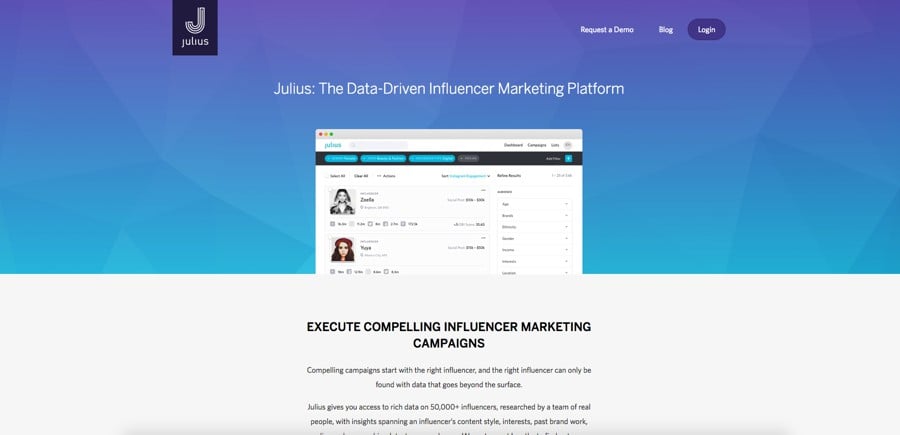
Julius began life as Thuzio, a web-based talent agency for athletes looking to make extra money with appearance fees and endorsement deals. Over time, other types of influencers joined the roster, and eventually, Thuzio morphed into Julius, the Influencer Search and Discovery tool.
Julius’ talent database has now grown to more than 50,000 influencers, each of whom has been manually researched before he or she was entered into the database. It covers a wide range of social media channels: Facebook, Twitter, Instagram, Pinterest, Vine, Snapchat, and YouTube.
Julius benefits from having a comprehensive and easy-to-use search facility, with more than 50 data points to search that can be combined in any way. It also benefits from having an efficient set of campaign management tools built in.

Services Offered: Influencer DiscoveryCampaign Management
Channels: Facebook, Twitter, Instagram, Pinterest, Vine, Snapchat, YouTube
-
Klear
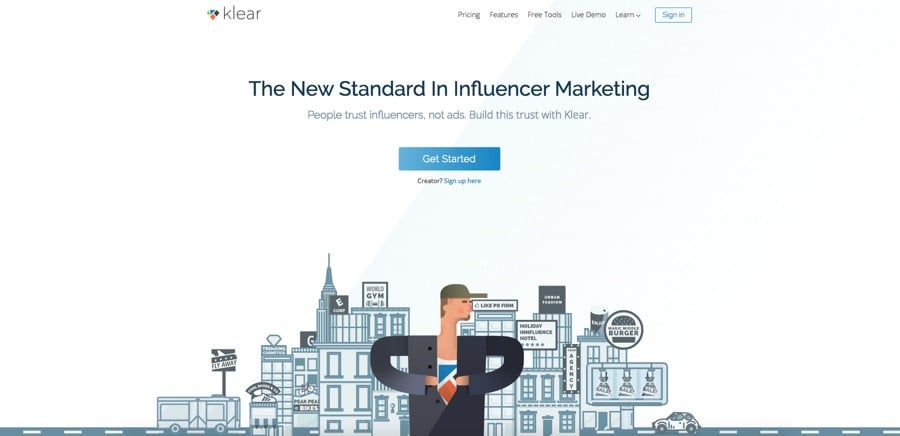
Klear was created four years ago by three brothers - Guy, Eytan and Noam Avigdor, who wanted to create a smarter way to access insights from the social web. They now work with some of the biggest brands and agencies, including Huawei, IMG, Adidas, Microsoft, and CocaCola.
Their plans are very simple. You can either test the waters with a free plan, with limited influencer search and social profiles, and demo monitors, or you can select the Advanced Plan. The Advanced Plan allows brands and agencies to find influencers, undertake influencer research, operate relationship management with influencers, undertake campaign monitoring, work on social monitoring, and have 1 on 1 consultation as part of their account management.
There is also an option for small businesses, the $250 / month Startup Plan. This allows small firms to participate in most influencer marketing activities, but with limits on the numbers of results/search, profiles/month, influencers managed, and brands and keywords they can work with.
-
Mustr
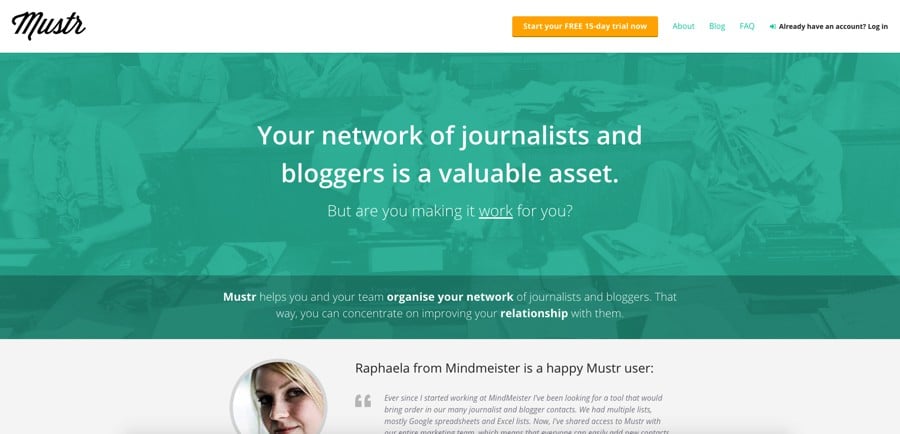
Mustr helps agencies and companies organize their network of journalists and bloggers. Mustr’s clients include Weight Watchers, Michelin, Finn, and Incrediblue. In this sense, it is more about organizing useful PR connections, than it is the typical type of influencer marketing that most of the other platforms here focus on.
It works in a similar way to a Customer Relationship Management (CRM) system - except it stores the information for journalists and bloggers, rather than customers. Firms can either use their account themselves or they can invite their PR agency to manage their contacts.
Businesses can share journalist and blogger contacts with their team, directly send press releases from Mustr (including high-res pictures and other information), send notes to journalists and share PR projects with clients.
-
Adly
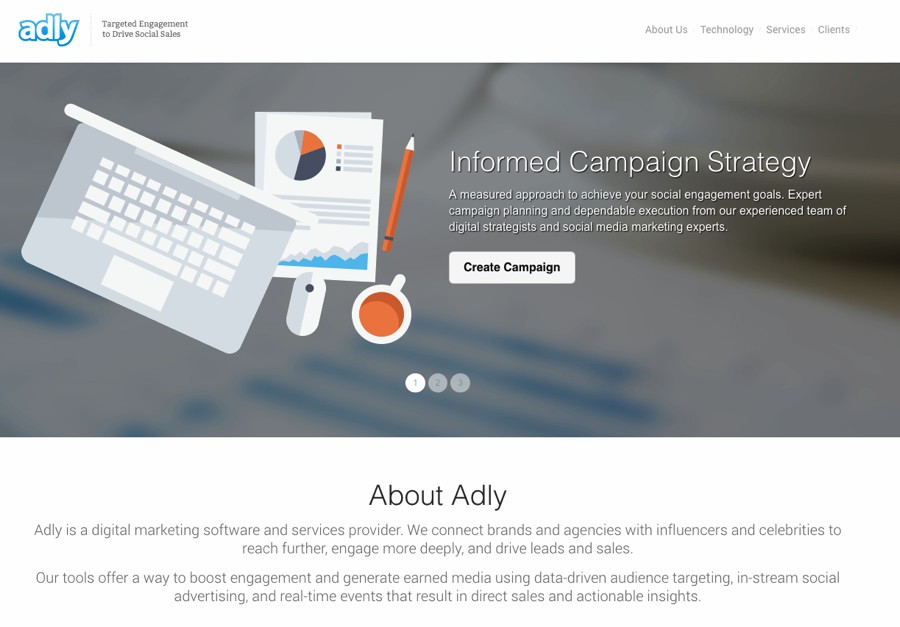 Not to be confused with the Taiwanese scooter manufacturer of the same name, Adly describes itself as a digital marketing software provider who connects brands and agencies with influencers and celebrities.It is an opt-in network for influencers who have to apply to be part of it. It covers the Facebook, Twitter, Instagram, LinkedIn, YouTube, Google + and Pinterest networks.Adly provides a variety of tools to help brands and agencies find the most appropriate influencers and then run campaigns. AudienceIQ is specifically designed to help find suitable matches, using what they call the Q-Score to determine just how influential somebody is. Adly Celebrity Intelligence Layer shows the digital connections formed by celebrity influencers.There are also tools to help with campaign building, as well as reporting and analysis.
Not to be confused with the Taiwanese scooter manufacturer of the same name, Adly describes itself as a digital marketing software provider who connects brands and agencies with influencers and celebrities.It is an opt-in network for influencers who have to apply to be part of it. It covers the Facebook, Twitter, Instagram, LinkedIn, YouTube, Google + and Pinterest networks.Adly provides a variety of tools to help brands and agencies find the most appropriate influencers and then run campaigns. AudienceIQ is specifically designed to help find suitable matches, using what they call the Q-Score to determine just how influential somebody is. Adly Celebrity Intelligence Layer shows the digital connections formed by celebrity influencers.There are also tools to help with campaign building, as well as reporting and analysis.
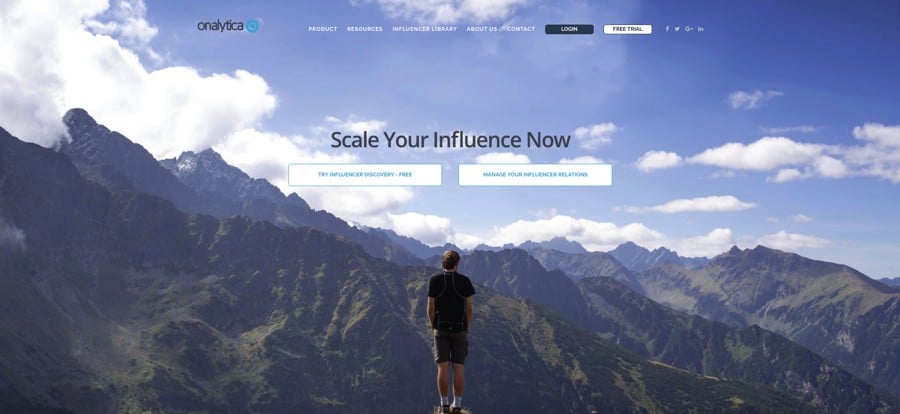
Onalytica was one of the earliest influencer marketing platforms, being founded in 2009. It has built up since then and gathered some big-name clients, such as Microsoft, Canon, VmWare, and the British Heart Foundation.
It operates on a SaaS platform, charging a monthly subscription fee for use of its features: influencer discovery, tools for managing influencer relationships, deep reporting and analytics, access to support, and access to a dedicated Customer Service Manager.
Onalytica takes a hybrid approach to its influencer database. It uses an algorithm to search through social media posts to find relevant influencers. However, a human team then oversees the results, removing anything clearly unsuitable. Customers can search for influencers by categories, platform, demographics, or content. The algorithm (with its human oversight) analyzes posts on Facebook, Twitter, Instagram, LinkedIn, WordPress and Blogs.
Onalytica’s search function digs very deeply and can generate a huge amount of data about influencers and their postings.

Services Offered: Influencer DiscoveryRelationship Management
Channels: Facebook, Twitter, Instagram, LinkedIn, WordPress, Blogs
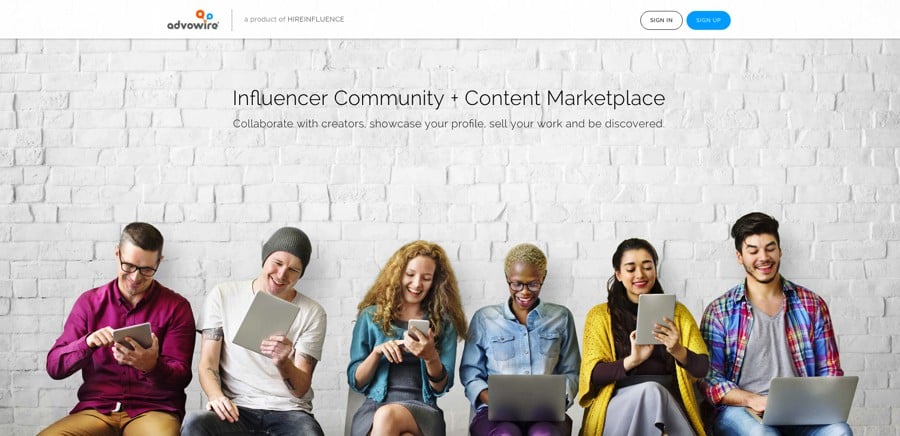
Full service digital marketing firm, HireInfluence, created Advowire in 2015 to provide an influencer marketing service for its clients. They have slowly built and perfected Advowire since then, so it is now a self-service influencer marketing platform, that works with influencers on Facebook, Twitter, Instagram, YouTube, Pinterest, Snapchat, and blogs.
Advowire uses an opt-in model for its community of influencer creators. It charges brands for their connections with its influencer community, using a system of credits. Different activities cost different numbers of credits. The higher the subscription level a firm opts for, the more credits they have available to use.
With subscriptions ranging from $99.99 to $1,399.99 per month (ignoring the free tier which is only really a trial), Advowire is happy to work with businesses of all sizes.
As well as the normal search functions where firms (with enough credits) can isolate the most suitable influencers for their niche, Advowire has the Marketplace, where content creators pitch articles and images they’ve already created.

Services Offered: Influencer Marketplace
Channels: Facebook, Twitter, Instagram, YouTube, Pinterest, Snapchat, Twitch, Blogs
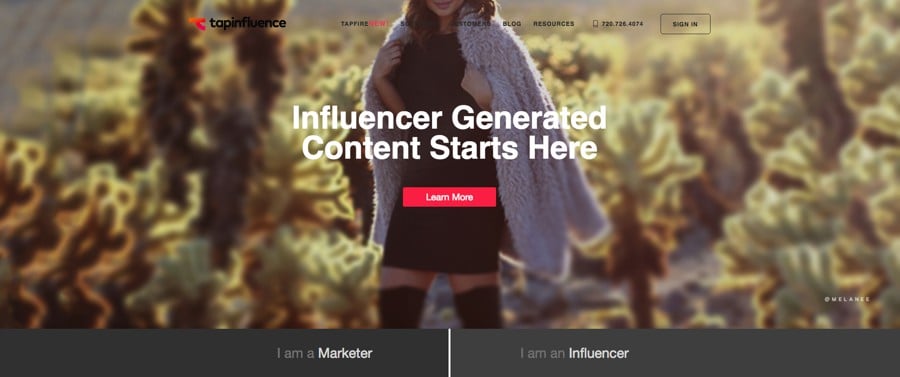
TapInfluence grew out of a product called Blog Frog, which focused on selling banner ads to companies looking to connect to targeted companies. With banner advertising losing favor, the company changed direction to work with social media influencers and became TapInfluence in 2013. They now enjoy a roster of impressive clients, such as Canon, Volvo, and Target.
They offer a range of plans to firms, from a self-serve plan giving firms access to the TapExchange software platform, to higher level plans where firms work directly with the TapInfluence team to develop their marketing plans and find the perfect influencers. They also offer TapFire as an add-on service to amplify content.
TapInfluence comprehensively covers four main areas: influencer search, influencer outreach, analytics, and campaign management. The search function allows users to discover influencers via their niche’s demographics and interests. It provides data on the influencers’ performance history and an estimated cost per engagement. Influencer information relates to their posts on Facebook, Twitter, Instagram, YouTube, Pinterest and their blogs.
It’s an opt-in network, so all 100,000 + influencers have been vetted and validated.
TapInfluence provides a comprehensive set of campaign management tools, that should meet most marketers’ needs.

Services Offered: Influencer DiscoveryCampaign Management
Channels: Facebook, Twitter, Instagram, Youtube, Pinterest, Blogs
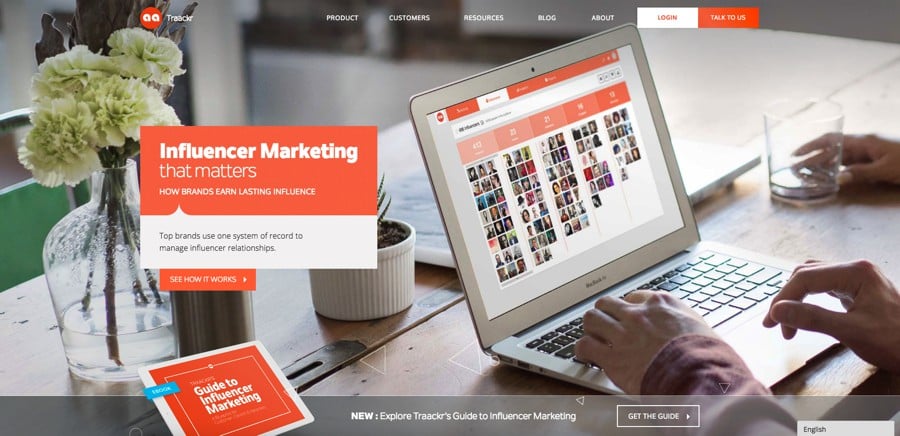
Traackr is one of the oldest influencer marketing platforms, dating back to 2008. It has survived because it has evolved.
The company now specializes in influencer relationship management and has built an online platform to enable this to happen.
Although they provide many online management tools, the real focus of Traackr is helping medium to large sized companies (and agencies) build lasting relationships with influencers
Traackr gives plenty of options for firms searching through its database of influencers. The influencer database is a hybrid - it isn’t opt-in, nor is it simply computer generated - it uses a mix of a computer algorithm and human input. Firms can sort influencers in many ways, including by how much of a relationship they have with them.
There is a social listening tool where you can track influencer content in real time. Another interesting tool is a network visualization map which shows the connections between an influencer and other people, both in and out of a firm’s network, giving an indication of other possible additions to the firm’s network.
Traackr offers influencer discovery, relationship management, and campaign management over the Facebook, Twitter, Instagram, YouTube, Pinterest, and Tumblr channels, along with blogs.

Services Offered: Relationship ManagementCampaign Management
Channels: Facebook, Twitter, Instagram, YouTube, Pinterest, Tumblr, Blogs
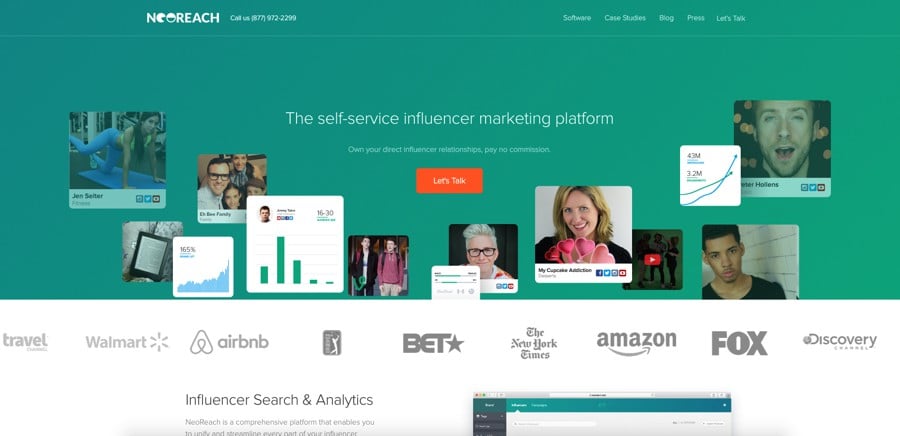
NeoReach grew out of a Stanford University class where Jesse Leimgruber (now CEO) and Misha Talavera (now CMO) came up with the idea for a digital marketing platform which would connect social media influencers with brands. The idea had enough traction for Leimgruber and Talavera to be accepted into Stanford’s accelerator program, which seeded NeoReach’s creation.
NeoReach uses an algorithm to mine the social web for data and indexes it through their platform. This has found 3,000,000 influencers for the NeoReach database.
NeoReach targets large companies and is not designed for small to medium businesses, with annual subscription fees being customized for each client, but in the range from $50K to $500K.
It collects a considerable quantity of data on each influencer. It also provides numerous tools for its clients, helping them to find influencers, run campaigns, track campaign performance, and report.
NeoReach looks at influencer activity on Facebook, Twitter, Instagram, YouTube, Pinterest, and Snapchat.

Services Offered: Influencer DiscoveryCampaign Management
Channels: Facebook, Twitter, Instagram, YouTube, Pinterest, Snapchat
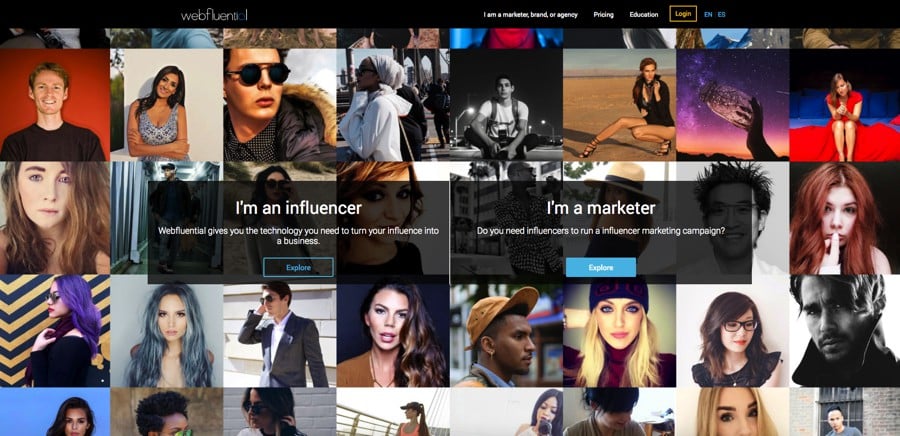
Webfluential looks at things from the opposite perspective to most of the big platforms. Rather than focusing on brands, and finding them suitable influencers, Webfluential put its focus on quality social media stars, finding them brands to work with. It works with stars on Facebook, Twitter, Instagram, YouTube, and WordPress.
This means that Webfluential only works with a roster of quality social media influencers. There is no social media post scraping here. The influencers on the Webfluential platform have been thoroughly vetted, approved, scored, and determined to be genuinely influential.
Influencers need to apply to be part of the system and if they make it through the vetting process they are given a dashboard to set up a profile, provide rates and publish a media kit. Webfluential adds a considerable amount of other data to help brands in their decision making.
The pricing system is also different from most. Brands pay a monthly fee based on the number of active influencers they have in their network (with a minimum monthly fee of $50). They also pay 10% of any content deal negotiated with influencers through the site. This makes Webfluential affordable for even small businesses wanting to participate in content marketing. Yet, even large corporations, like Adidas, Samsung, and Coca-Cola, are happy to be their clients.
Brands, agencies, and marketers search for suitable influencers within the Webinfleuntial system. They then negotiate with suitable influencers there and make payments within the system as well. It works similarly to some of the freelancing sites, like Upwork.

Services Offered: Influencer Marketplace
Channels: Facebook, Twitter, Instagram, Youtube, WordPress
-
Zoomph

Zoomph describes itself as being one platform that powers richer analytics and deeper engagement. Data is very much the focal point of the platform. It has built up a database with more than 200 million social identities, with a great deal of information about their social activity. Zoomph enables brands to explore new communities and directs them towards communities with similar values as themselves.
It boils down trending conversations into their unique triggers and measures the impact of social campaigns.
There is quite a bit more to Zoomph than influencer marketing. However, it does include a considerable amount of data that will be of use to businesses wanting to find the perfect influencers to match their brand’s image. Depending on the pricing tier selected, Zoomph covers Twitter, Facebook, Instagram, Google +, RSS, YouTube, and Chatter.
Comments
Post a Comment
Do not insert clickable links or your comment will be deleted. Checkbox Send me notifications to be notified of new comments via email.